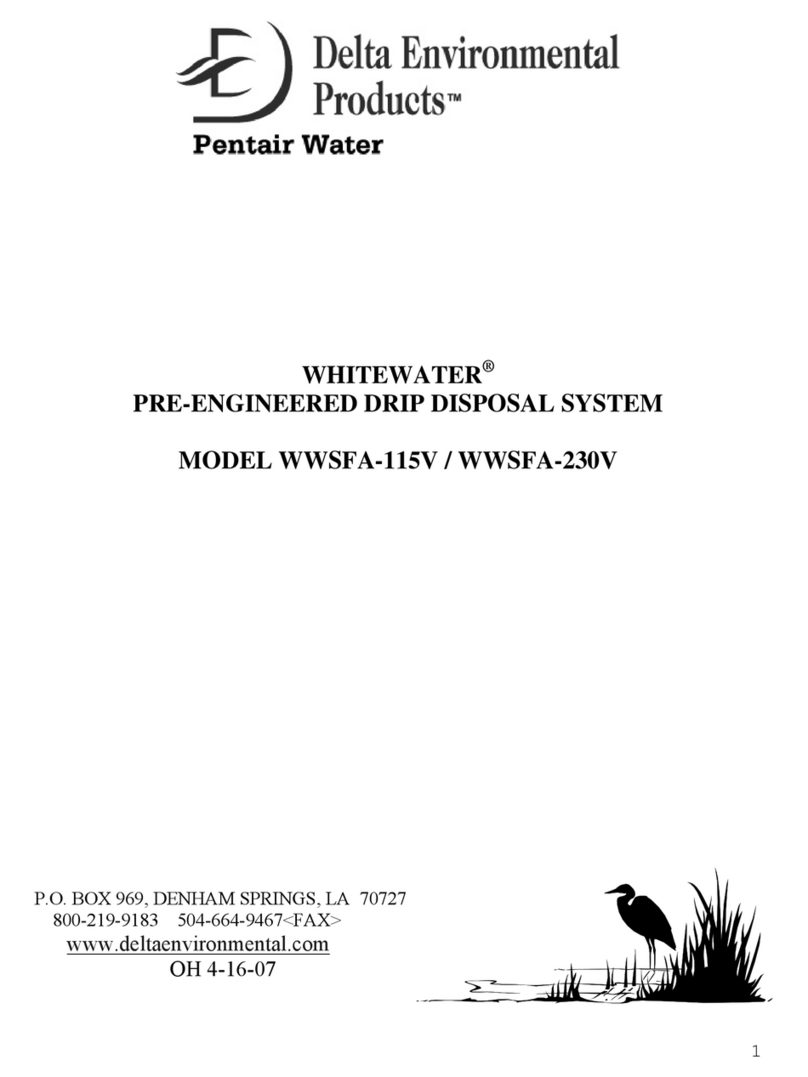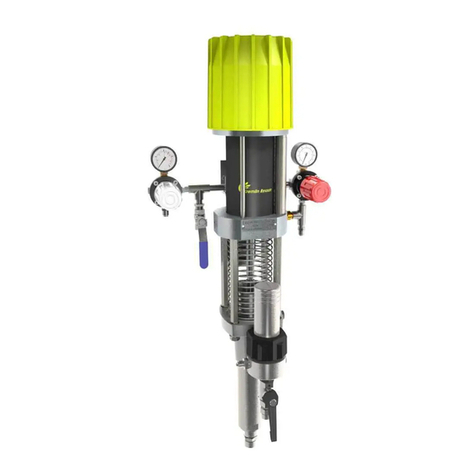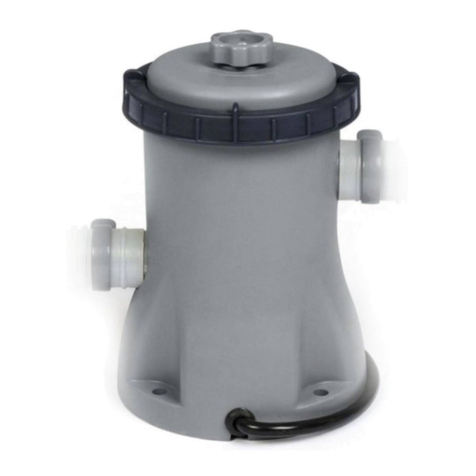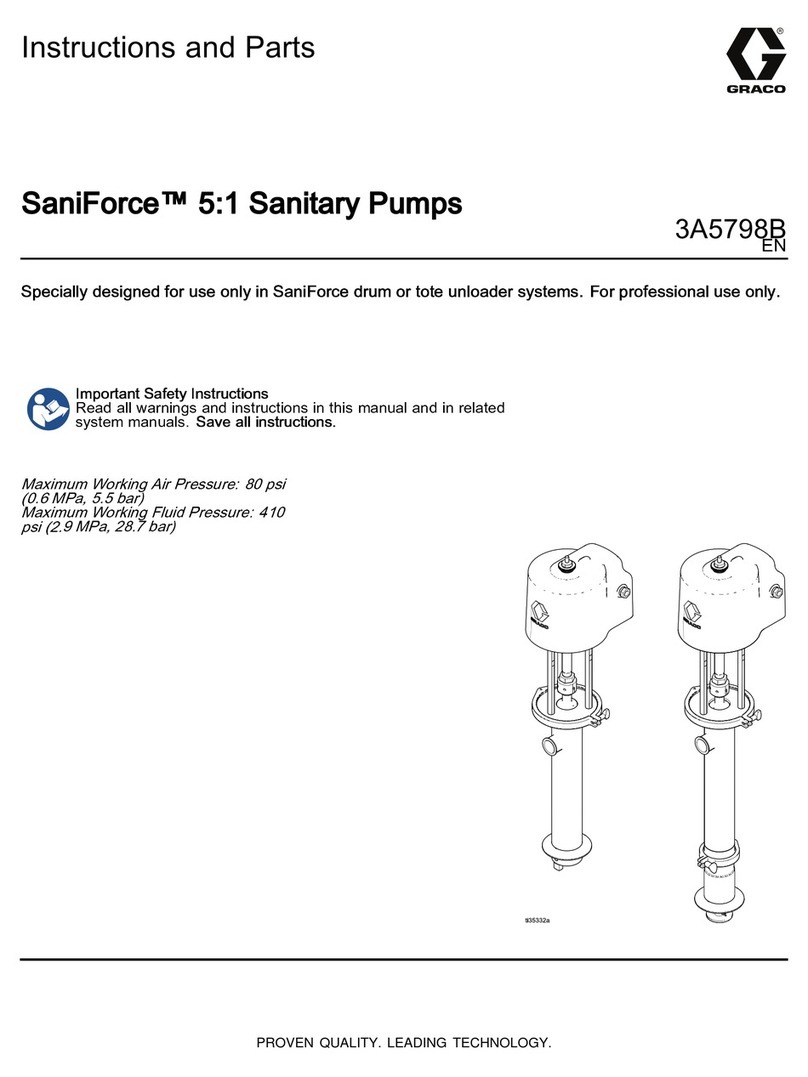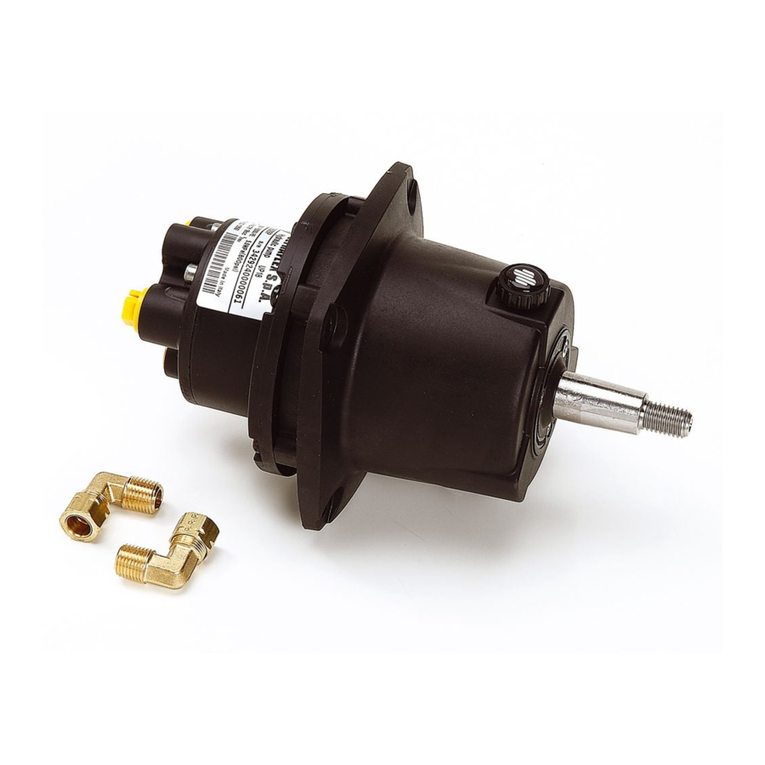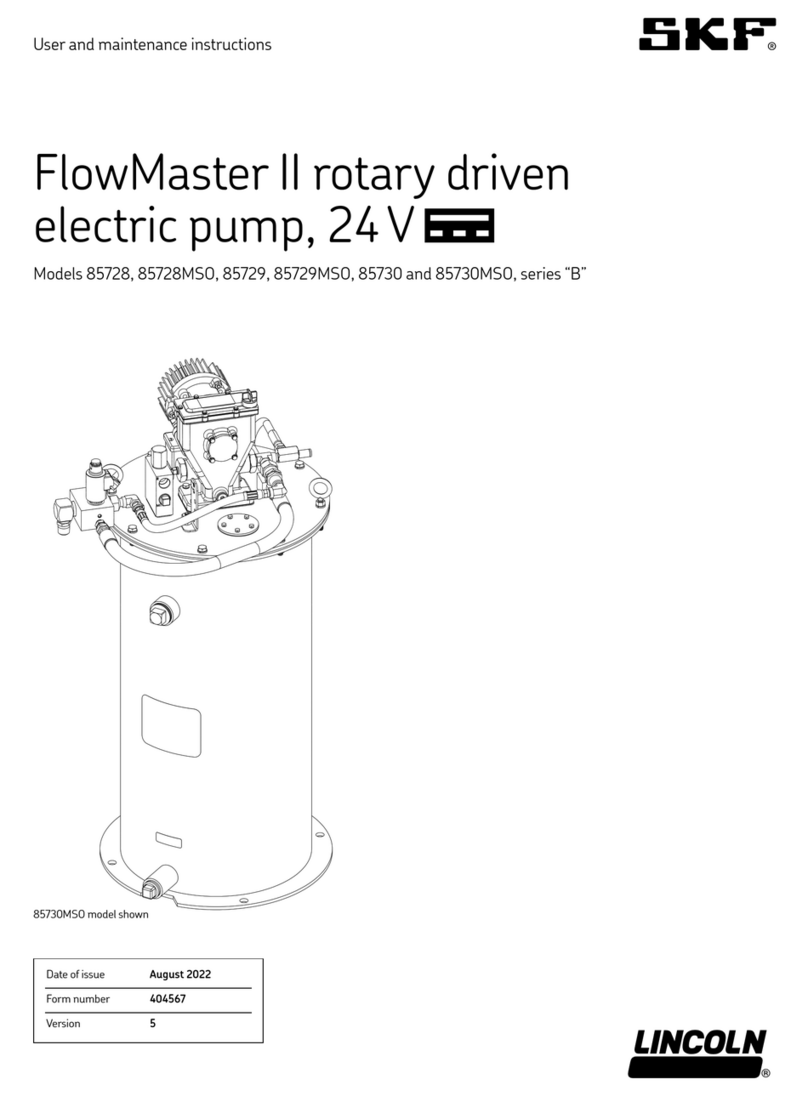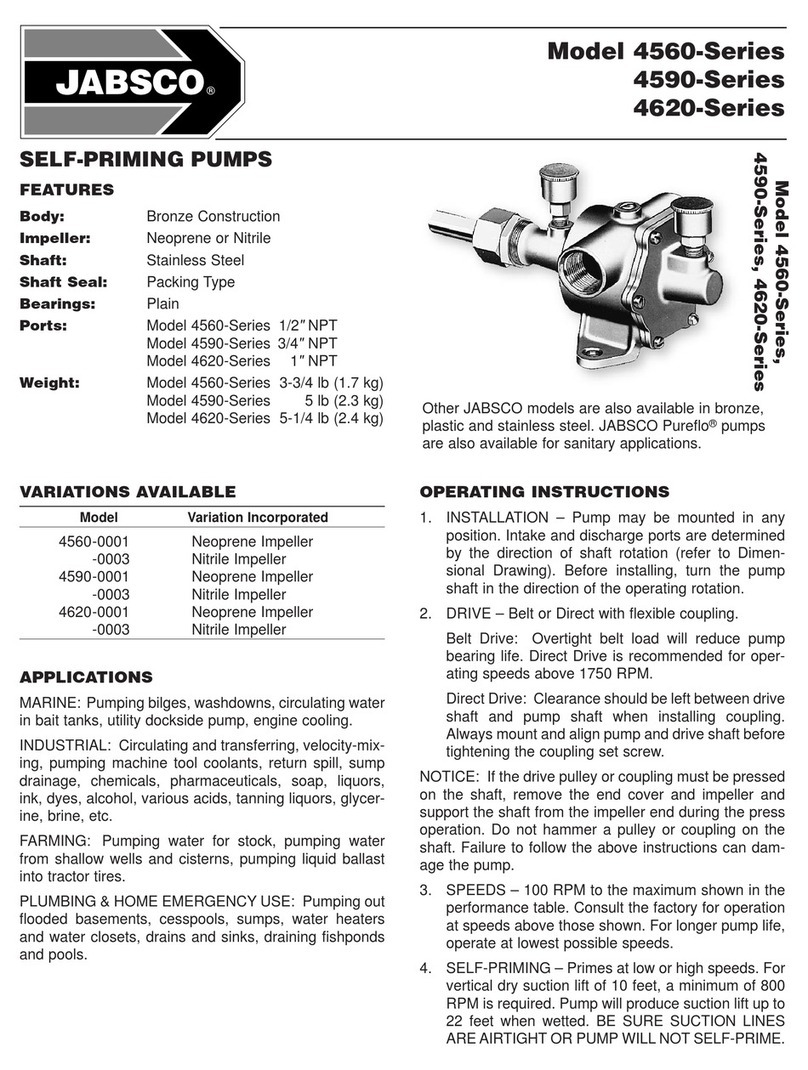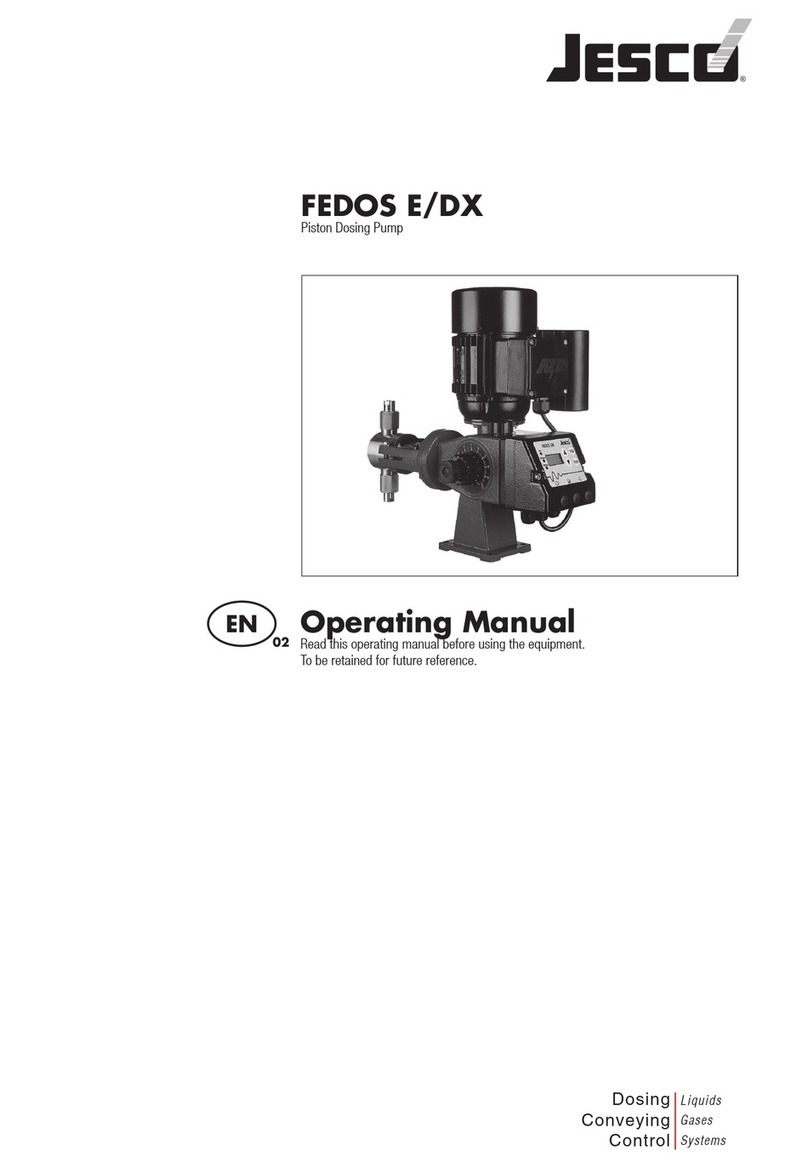Delta Environmental Products DE33 Series Guide

DE33/DE40H/DS40/
DS50/DS50H Series
Submersible Solids
Handling Pumps
INSTALLATION, OPERATION, & PARTS MANUAL
SAFETY INFORMATION
Carefully read and follow all safety instructions in this
manual or on pump.
This is the safety alert symbol. When you see this
symbol on your pump or in this manual, look for one of the
following signal words and be alert to the potential for
personal injury!
warns about hazards that will cause serious
personal injury, death or major property damage if ignored.
warns about hazards that can cause serious
personal injury, death or major property damage if ignored.
warns about hazards that will or can cause
minor personal injury or property damage if ignored.
The word NOTICE indicates special instructions which are
important but not related to hazards.
1. Read these rules and instructions carefully. Failure to
follow them could cause serious bodily injury and/or
property damage.
2. Check your local codes before installing. You must com-
ply with their rules.
3. Vent sewage or septic tank according to local codes.
4. Do not install pump in any location classified as haz-
ardous by National Electrical Code, ANSI/NFPA 80-1984
or the Canadian Electrical Code.
Hazardous voltage. Can shock,
burn, or kill. During operation the pump is in water.
To avoid fatal shocks, proceed as follows if pump needs
servicing:
5A. Disconnect power to outlet box before unplugging pump.
5B. Take extreme care when changing fuses. Do not stand
in water or put your finger in the fuse socket.
5C. Do not modify the cord and plug. When using the cord
and plug, plug into a grounded outlet only. When wiring
to a system control, connect the pump ground lead to
the system ground.
6. Do not run the pump dry. Dry running can overheat the
pump, (causing burns to anyone handling it) and will
void the warranty.
7. The pump normally runs hot. To avoid burns when ser-
vicing pump, allow it to cool for 20 minutes after shut-
down before handling it.
8. The pump is permanently lubricated. No oiling or greas-
ing is required in normal operation. for overhaul, see
instructions under “Service”.
© 2009 DE504 (7/14/09)
Motor Individual Cord Switch Setting Discharge
Model Motor Full Branch Circuit Length in inches (mm) Adapter
Number HP Voltage Load Amps Required (Amps) in ft. (m) On Off Size
DE33-20-A1 1/3 115/1 13.0 20 20 (6.1) 13.5 (343) 4.5 (114) 1-1/2"
DE33-20-M1 1/3 115/1 13.0 20 20 (6.1) – – 1-1/2"
DE40H-20-A1 4/10 115/1 9.7 15 15 (4.6) 16.5 (419) 7.5 (191) 2"
DE40H-20-M1 4/10 115/1 9.7 15 15 (4.6) – – 2"
DS40-20-A1 4/10 115/1 12.5 20 20 (6.1) 16 (406) 7 (178) 2"
DS50-20-A1 1/2 115/1 13.0 20 20 (6.1) 16 (406) 7 (178) 2"
DS50-20-M1 1/2 115/1 13.0 20 20 (6.1) – – 2”
DS50F-20-A1 1/2 115/1 9.0 10 20 (6.1) 18 (457) 8.5 (216) 2"
DS50F-20-M1 1/2 115/1 9.0 10 20 (6.1) – – 2"
MOTOR, SWITCH, & CORD SPECIFICATIONS
8275 Florida Blvd. • Denham Springs, LA 20726

DESCRIPTION
These submersible sump/effluent and sewage pumps are
designed for effluent and wastewater removal, sump drainage,
dewatering, flood control. The high temperature models can be
used in boiler blow down pits, condensate pits and as hot water
pumps. Units have built in thermal overload protection with auto-
matic reset. The mechanical seal and ball bearings on the motor
shaft are permanently lubricated. Stainless steel hardware and a
heavy duty lift out ring allow for easy disassembly after extended
use.
NOTICE: This unit is not designed for applications involving salt
water or brine! Use with salt water or brine will void warranty.
SPECIFICATIONS
Power supply required...............See “Motor, Switch and Cord
Specifications” chart on Page 1
Maximum Liquid Temperature............................130°F(55°C)*
Discharge Adapter ......................................1-1/2” OR 2” NPT
INSTALLATION
Hazardous voltage. Can shock, burn or kill.
Do not lift pump by the power cord. See “Cord Lift Warning”
on Page 3.
NOTICE: Install the pump on a hard, level surface (cement,
asphalt, etc.). Never place the pump directly on earth, clay or
gravel surfaces.
Piping
Piping must not be smaller than pump discharge.
When installed in a sewage system, the pipe must be
capable of handling semi-solids of at least 2" (51mm) in
diameter.
When installed in an effluent system, the pipe must be
capable of handling semi-solids of at least 3/4" (19mm) in
diameter.
The rate of flow in the discharge pipe must keep any solids
present in suspension in the fluid. To meet minimum flow
requirements (2 feet per second in the discharge line), size
the pipe as follows:
A Pipe Size Of: Will Handle a Flow Rate Of:
1-1/2" (38mm) 12 GPM
2" (51mm) 21 GPM
2-1/2"(64mm) 30 GPM
3"(76mm) 48 GPM
In a sewage system use a 2" (51mm) check valve in pump dis-
charge to prevent backflow of liquid into sump basin. The check
valve should be a free flow valve that will easily pass solids. Be
sure check valve installation complies with local codes.
In an effluent system use a 1-1/2" (38mm) check valve in
pump discharge to prevent backflow of liquid into sump
basin. The check valve should be a free flow valve that will
easily pass solids. Be sure check valve installation complies
with local codes.
NOTICE: For best performance of check valve when handling
solids, do not install it with the discharge more than 45°
above the horizontal. Do not install the check valve in a verti-
cal position as solids may settle in the valve and prevent it
from opening on startup.
Drill a 3/16" (5mm) hole in the discharge pipe about 1–2"
(25-51mm) above the pump discharge connection (but below
check valve) to prevent airlocking the pump.
Electrical
Hazardous voltage. Can shock, burn, or kill.
When installing, operating, or servicing this pump, follow the
safety instructions listed below.
1. DO NOT splice the electrical power cord.
2. DO NOT allow the electrical cord plug to be submerged.
3. DO NOT use extension cords. They are a fire hazard and
can reduce voltage sufficiently to prevent pumping and/or
damage motor.
4. DO NOT handle or service the pump while it is connect-
ed to the power supply.
5. DO NOT remove the grounding prong from the plug or
modify the plug. To protect against electrical shock, the
power cord is a three-wire conductor and includes a 3-
prong grounded plug. Plug the pump into a 3-wire,
grounded, grounding-type receptacle. Connect the pump
according to the NEC or CEC and local codes.
For automatic operation, plug or wire the pump into an auto-
matic float switch or duplex controller. The pump will run con-
tinuously when plugged directly into an electrical outlet.
Connect or wire pump to its own individual branch circuit with
no other outlets or equipment in the circuit. Size fuses or cir-
cuit breakers according to the “Motor, Switch and Cord
Specifications” chart.
Risk of electrical shock and fire. Can burn,
kill or cause property damage. Be sure that power supply
information (Voltage/ Hertz/Phase) on pump motor name-
plate matches incoming power supply exactly. Install pump
according to all electrical codes that apply.
2
GPM AT TOTAL FEET
Model 51015202530
CAPACITY GALLONS/MINUTE
DE33-20-A1 – 46 32 12 – – 22'
DE33-20-M1 – 46 32 12 – – 22
DE40H-20-A1 61 52 45 38 30 21 40
DE40H-20-M1 61 52 45 38 30 21 40
DS40-20-A1 90 66 25 – – – 18
DS50-20-A1 91 64 31 – – – 18
DS50-20-M1 91 64 31 – – – 18
DS50F-20-A1 160 130 75 22 – – 23
DS50F-20-M1 160 130 75 22 – – 23
No flow
at height
shown below
*For performance at maximum temperature see Catalog.
PERFORMANCE

OPERATION
Risk of fire or explosion. Can cause severe
personal injury, property damage or death. Do not use in
explosive atmospheres. Pump water only with this pump.
NOTICE: Do not allow the pump to run in a dry sump. It will
void the warranty and may damage the pump.
An automatic overload protector in the motor will protect the
motor from burning out due to overheating/overloading. When
the motor cools down, the overload protector will automati-
cally reset and start the motor.
If the overload trips frequently, check for the cause. It could
be a stuck impeller, wrong/low voltage, or an electrical failure
in the motor. If an electrical failure in the motor is suspected,
have it serviced by a competent repairman.
The pump is permanently lubricated. No oiling or greasing is
required.
SERVICE
General
Hazardous voltage and risk of cord dam-
age. Can shock, burn, or kill. Before removing the pump
from the basin for service, always disconnect electrical power
to the pump and the control switch. Do not lift the pump by
the power cord. See the “Cord Lift Warning” below.
After removing the basin cover and the necessary discharge
piping, lift the pump out of the basin.
Place the pump in an area where it can be cleaned thor-
oughly. Remove all scale and deposits on the pump.
Submerge the complete pump in a disinfectant solution
(chlorox or chlorine bleach) for at least one hour before dis-
assembling the pump.
The pump motor housing contains a special lubricating oil
which should be kept clean and free of water at all times.
NOTICE: Whenever the motor housing is being removed for
service, remove oil and replace it with new oil at reassembly.
Use only oil listed in parts list in this manual. When filling
with new oil, DO NOT overfill. Allow about 7/8" (22mm) air
space from top of boss in housing for expansion of oil when
the pump is operating.
Pump Disassembly
Impeller and Seal Replacement
A. Impeller removal
1. Remove the oil fill plug and turn the pump upside
down to drain oil.
2. Remove the capscrews holding the upper motor hous-
ing to the lower motor housing; lift off the upper motor
housing and remove the motor lead wires from the
connector to detach upper housing from assembly.
The lead wires are fitted with quick connect terminals
for this purpose.
3. Remove the capscrews holding the lower motor hous-
ing to the volute; lift off the lower motor housing.
4. Hold the rotor shaft assembly and unscrew the
impeller by turning it counter-clockwise. Remove
impeller and clean it.
If no more service is needed, reverse instructions above
to reassemble the pump. Reattach the motor lead wires
as shown in Figure 1, fill with clean dielectric oil (Part
No. U197-8A), check the oil level and replace fill plug.
Oil should cover the motor windings (E3/EC3/SC5
Series) or the top of the motor (EC4 Series).
B. Shaft seal replacement:
1. Follow the instructions to remove the impeller, above.
2. Remove the stator capscrews and the spacers (if
applicable). Lift off the stator.
3. Remove the seal’s ceramic seat from the shaft and tap
the body of the seal out of the lower motor housing.
4. Clean the seal cavity thoroughly before installing the
new seal. NOTICE: Make sure that the seal faces are
clean; do not scratch or damage the new seal face
during seal replacement. Apply Permatex #2 or an
equivalent sparingly to the outside edge of seal body
before installing the seal in the lower motor housing.
5. Press the new seal body into position in the lower
housing cavity.
6. Press the ceramic seat onto the motor shaft. The
impeller will pull it into position.
7. Reassemble the stator and tighten the stator cap-
screws. If your pump has a capacitor (Key. No. 14), be
sure the spacer is under it to keep it away from the oil
in the motor.
Risk of electrical shock. Can burn or
kill. Discharge capacitor before handling it. Electrical
shock can burn or kill.
8. Reassemble the impeller and the pump (reverse
instructions 1 through 4 in section A).
9. Install new capacitor.
10. Reattach the motor lead wires as shown in Figure 1.
11. Fill with clean dielectric oil (Part No. U197-8A), check
the oil level and replace the oil fill plug.
Short Divider
Either Black Wire
Either Black Wire
Green Wire
View A-A
(connected between
the two tallest
dividers)
409 0893
Figure 1
3
1. Attempting to lift or support pump by power cord
can damage cord and cord connections.
2. Cord may pull apart, exposing bare wires with
possibility of fire or electrical shock.
3. Lifting or supporting pump by power cord will
void warranty.
4. Use lifting ring or handle on top of pump for all
lifting/lowering of pump. Disconnect power to
pump before doing any work on pump or
attempting to remove pump from sump.
Risk of electrical shock.
Can burn or kill.
Do not lift pump by
power cord.
WARNING CORD LIFT WARNING

4
410 0893
Oil Fill
Plug
Housing
Capscrew
Rotor/Stator
Assembly
Stator
Capscrew
Lower
Motor
Housing
Volute
Shaft Seal,
Stationary
Head Ass’y
Shaft Seal,
Rotating
Mating Ring
O-Ring
Insulating
Disk
Blk
Blk
Grn
Impeller
Power Cord
Pump Disassembly
DE33/DS50 Series
Oil fill plug
Upper motor
housing
Housing
capscrew
Power cord
connector
Blk
Blk
Grn
Rotor/Stator
Assembly
Lower Motor
Housing
Rotor/Stator
Capscrew
Volute
A
A
(See Fig. 1)
Shaft Seal, Stationary Head Assembly
Shaft Seal, Rotating Mating Ring
Impeller
Spacer
Pump Disassembly – DE40H Series

5
3917 0301 Disassmbly
Shaft Seal, Stationary Head Assembly
Shaft Seal, Rotating Mating Ring
Lower Motor Housing
Impeller
Insulating Disk
Volute
Upper Motor Housing
Oil Fill
Plug
Capscrews
Switch Cord Clamp
Pump Disassembly – DS40 Series
Oil fill
plug
Upper motor
housing
Housing
capscrew
Power cord
connector
Lower Motor
Housing
Rotor/Stator
Assembly
Rotor/Stator
Capscrew
Volute
Shaft Seal, Stationary Head Assembly
Shaft Seal, Rotating Mating Ring
Impeller
A
A
(See Fig. 1)
Pump Disassembly – DS50F Series

6
1
2
4
5
6
7
13
14
6
15A
15B
16
17
3
8
9
10
11
12
DE33/DS50 SERIES EXPLODED VIEW
DE33-20-M1 DS50-20-M1
Key Part DE33-20-A1 DS50-20-A1
No. Description Qty. 1/3 HP 115 V 1/2 HP 115V
1 Power Cord 1 PW117-122-TSE PW117-122-TSE
2 Cord Connector 1 PS17-46P PS17-46P
3 Handle Ring 1 U97-128 U97-128
4 1/4" NPT Plug 1 U78-57DT U78-57DT
5 Upper Motor Housing 1 PW18-22F PW18-22F
6 #10-32 x 3/4" Capscrew 6 U30-482SS U30-482SS
7 Insulating Disk 1 PS18-82 PS18-82
8 #10-32 x 3-1/8" Capscrew 2 U30-949ZP U30-949ZP
9 Rotor/Stator Assembly 1 PS218-151 PS218-151
10 Switch Cord Clamp* 1 CC0030-13 CC0030-13
11 #8-32 x 1/2” Capscrew* 1 U30-539SS U30-539SS
12 Automatic Float Switch* 1 PS17-111 PS17-111
13 O-Ring 1 U9-339 U9-339
14 Lower Motor Housing 1 PW18-23AA PW18-23AA
15A Shaft Seal Stationary
Head Assembly 1 U9-379A U9-379A
15B Shaft Seal Rotating
Mating Ring 1 U9-321A U9-321A
16 Impeller 1 PW5-5P PW5-11P
17 Volute 1 PW1-4 PW1-13
• Dielectric Oil 1 U197-8A U197-8A
• Not Illustrated.
* Models with tether switch only.
REPAIR PARTS LIST

7
7
14
8
9
10
11
16A
12
13
4
3
2
1
6
5
16B
17
18
15
9
1050 0797 EC4
DE40H SERIES EXPLODED VIEW
DE40H-20-M1
Key Part DE40H-20-A1
No. Description Qty 4/10 HP 115V
1 Power Cord 1 PW117-122-TSE
2 Automatic Float Switch* 1 PS117-126P
3 Cord Connector 1 PS17-46P
4 #8-32 x 1/2” Capscrew* 1 U30-539SS
5 Switch Cord Clamp* 1 CC0030-13
6 Handle Ring 1 U97-128
7 1/4" NPT Plug 1 U78-57DT
8 Upper Motor Housing 1 PW18-133
9 #10-32 x 3/4" Capscrew 6 U30-482SS
10 #10-32 x 3-1/8" Capscrew 2 U30-963ZP
11 Capacitor 1 PS18-148
12 Spacer 2 U43-139
13 Motor 1 PW118-145
14 O-Ring 1 U9-339
15 Lower Motor Housing 1 PW18-134
16A Shaft Seal, Stationary Head Assembly 1 U9-379A
16B Shaft Seal, Rotating Mating Ring 1 U9-379C
17 Impeller 1 PW5-16P
18 Volute 1 PW1-16
• Dielectric Oil 1 U197-8A
• Not Illustrated.
* Models with tether switch only.
REPAIR PARTS LIST

8
9A
1
4
6
8
3
2
7
10
11
12
13
5
14
15
17
16
9B
DS40 SERIES EXPLODED VIEW
Key Part DS40-20-A1
No. Description Qty 4/10 HP 115V
1 Power Cord 1 PW117-122-TSE
2 Cord Connector 1 PS17-46P
3 O-Ring 1 U9-370
4 #10-32 x 3/4" Capscrew 3 U30-482SS
5 Upper Motor Housing 1 **
6 O-Ring 1 U9-339
7 Insulating Disk 1 PS18-82
8 Lower Motor Housing 1 **
9A Shaft Seal,
Stationary Head Assembly 1 U9-379A
9B Shaft Seal,
Rotating Mating Ring 1 U9-321A
10 Impeller 1 PW5-11P
11 Volute 1 PW1-13
12 #10-32 x 3-1/8" Capscrew 8 U30-966SS
13 Automatic Float Switch 1 PS17-111
14 Handle Ring 1 U97-128
15 1/4" NPT Plug 1 U78-941ZPV
16 #8-32 x 1/2” Capscrew 1 U30-539SS
17 Switch Cord Clamp* 1 CC0030-13
• Dielectric Oil (uses .61 qts.) 1 U197-8A
• Not Illustrated
REPAIR PARTS LIST

9
1
2
3
8
6
9
4
6
16
11
12
15A
15B
14
3310 0898SC6
513
17
18
10
7
DS50F SERIES EXPLODED VIEW
DS50F-20-M1
Key Part DS50F-20-A1
No. Description Qty 1/2 HP 115V
1 Power Cord 1 PW117-122-TSE
2 Cord Connector 1 PS17-46P
3 1/4" NPT Plug 1 U78-57DT
4 Handle Ring 1 U97-128
5 Upper Motor Housing 1 PW18-133
6 #10-32 x 3/4" Capscrew 6 U30-482SS
7 Capacitor 1 U18-1590
8 #10-32 x 4-1/4" Capscrew 2 U30-973ZP
9 Washer 1 U43-43ZP
10 Rotor/Stator Assembly 1 PW218-148
11 #8-32 x 1/2” Capscrew 1 U30-539SS
12 Switch Cord Clamp* 1 CC0030-13
13 O-Ring 1 U9-339
14 Lower Motor Housing 1 PW18-23AA
15A Shaft Seal, Stationary 1 U9-439A
15B Shaft Seal, Rotating 1 U9-439B
16 Impeller 1 PW5-21
17 Volute 1 PW1-18
18 Automatic Float Switch* 1 PS17-111
• Dielectric Oil ** U197-8A
• Not Illustrated.
* Models with tether switch only.
** Uses less than 2 qts.
REPAIR PARTS LIST

TROUBLES-REMEDIES
Sudden Starts. If the power is on to the pump when thermal overload resets, the pump may start without
warning. If you are working on the pump, you may get an electrical shock or the impeller may catch fingers or tools.
Disconnect the power before servicing the pump.
10
A. Pump fails to operate: 1. Check to be sure that power cord is securely plugged into outlet or securely wired
into controller or switch box. Disconnect power to outlet before handling pump
or motor.
2. Check to be sure you have electrical power.
3. Check that liquid fluid level is high enough to activate switch or controller.
4. Check to be sure that 3/16" (5mm) vent hole in discharge pipe is not plugged.
5. Check for blockage in pump inlet, impeller, check valve or discharge pipe.
6. Disconnect the pump from the power source for a minimum of 30 minutes to allow
the motor to cool and to protect yourself from sudden starts. See Warning above.
Check for the cause of overheating. Pump is running dry because the float switch
is caught up on something. Inlet pipe is plugged. Outlet pipe is plugged.
B. Pump fails to empty sump: 1. Be sure all valves in discharge pipe are fully open.
2. Clean out discharge pipe and check valve.
3. Check for blockage in pump inlet or impeller.
4. Pump not sized properly. A higher capacity pump may be required.
C. Pump will not shut off: 1. Check switch or controller automatic floats for proper operation and location.
See installation instructions for switch/controller.
2. If pump is completely inoperative or continues to malfunction, consult your
local serviceman.
LIMITED WARRANTY
Delta Environmental Products (“Delta”) warrants to the original consumer purchaser (“Purchaser” or “You”) of the products
listed below, that they will be free from defects in material and workmanship for the Warranty Period shown below.
Product Warranty Period
Sump/Sewage/Effluent Products 12 months from date of original installation, or
18 months from date of manufacture
Our warranty will not apply to any product that, in our sole judgement, has been subject to negligence, misapplication,
improper installation, or improper maintenance. Without limiting the foregoing, operating a three phase motor with single
phase power through a phase converter will void the warranty. Note also that three phase motors must be protected by
three-leg, ambient compensated, extra-quick trip overload relays of the recommended size or the warranty is void.
Your only remedy, and Delta’s only duty, is that Delta repair or replace defective products (at Delta’s choice). You must pay
all labor and shipping charges associated with this warranty and must request warranty service through the installing
dealer as soon as a problem is discovered. No request for service will be accepted if received after the Warranty Period
has expired. This warranty is not transferable.
DELTA SHALL NOT BE LIABLE FOR ANY CONSEQUENTIAL, INCIDENTAL, OR CONTINGENT DAMAGES
WHATSOEVER.
THE FOREGOING WARRANTIES ARE EXCLUSIVE AND IN LIEU OF ALL OTHER EXPRESS AND IMPLIED
WARRANTIES, INCLUDING BUT NOT LIMITED TO THE IMPLIED WARRANTIES OF MERCHANTABILITY AND
FITNESS FOR A PARTICULAR PURPOSE. THE FOREGOING WARRANTIES SHALL NOT EXTEND BEYOND THE
DURATION EXPRESSLY PROVIDED HEREIN.
Some states do not allow the exclusion or limitation of incidental or consequential damages or limitations on the duration
of an implied warranty, so the above limitations or exclusions may not apply to You. This warranty gives You specific legal
rights and You may also have other rights which vary from state to state.
This warranty supersedes and replaces all previous warranty publications.
Delta Environmental Products
8275 Florida Blvd, Denham Springs, LA 20726

Bombas sumergibles para el
manejo de partículas sólidas
MANUAL DE INSTALACIÓN, OPERACIÓN Y REPUESTOS
INFORMACIÓN SOBRE
LA SEGURIDAD
¡Es importante que lea y observe todas las instrucciones de
seguridad en este manual o en la bomba!
Este es un símbolo de alerta sobre la seguridad. Cuando
vea este símbolo en su bomba o en este manual, busque para ver
si hay alguna de las siguientes palabras de señal y esté alerta
sobre la posibilidad de lesiones personales.
Advierte sobre peligros que ocasionarán lesiones
personales graves, muerte o daños considerables a la propiedad si
se les ignora.
Advierte sobre peligros que pueden oca-
sionar lesiones personales graves, muerte o daños considerables a
la propiedad si se ignoran.
Advierte sobre peligros que ocasionarán o
pueden ocasionar lesiones personales o daños a la propiedad
menores si se ignoran.
La etiqueta de AVISO indica instrucciones especiales que son
importantes pero que no están relacionadas con los peligros.
1. Es importante que lea cuidadosamente estas reglas e
instrucciones. Si se ignoran, existe el riesgo de lesiones cor-
porales graves y/o daños materiales.
2. Verifique sus códigos locales antes de la instalación. Deberá
cumplir con sus reglas.
3. Ventile el tanque cloacal o séptico según los códigos locales.
4. No instale la bomba en ningún lugar clasificado como peligroso
por el Código Eléctrico Nacional, la norma 80-1984 de
ANSI/NFPA o el Código Eléctrico Canadiense.
Tensión peligrosa. Puede causar
choque, quemaduras o muerte. La bomba se encuentra en
agua durante la operación. Para evitar choques fatales, continúe
de la siguiente manera, si la bomba necesita reparaciones:
5A. Desconecte la corriente a la caja de salida antes de desenchu-
far la bomba.
5B. Tenga mucho cuidado cuando cambie los fusibles. No se pare
en el agua ni ponga los dedos en un portafusible.
5C. No modifique el cordón ni el enchufe. Cuando use el cordón y
el enchufe, enchúfelos solamente en una toma de corriente
puesta a tierra. Cuando el cableado se haga a un control del
sistema conecte el conductor a tierra de la bomba a la conex-
ión a tierra del sistema.
6. No haga marchar la bomba en seco. La marcha en seco puede
hacer que la bomba se recaliente (causando quemaduras a la
persona que la esté manipulando), y anulará la garantía.
7. La bomba está caliente al tacto durante la operación. Para evi-
tar quemaduras durante las operaciones de reparación y man-
tenimiento, deje que se enfríe durante 20 minutos después de
haberla apagado y antes de manipularla.
8. La bomba viene con lubricación permanente. Bajo un servicio
normal, no se necesitará aceitar ni engrasar. Para ponerla a
punto, consulte las instrucciones en la sección de "Servicio".
ADVERTENCIA
PRECAUCIÓN
ADVERTENCIA
© 2009 DE504 (7/14/09)
Carga total Requiere un Largo del Graduación del conmutador Tamaño del
Númerol CV del del motor ramal individual cordón en en pulgadas (mm) adaptador
del motor motor Tensión en amperios (amperios) pies (m) encendido apagado de descarga
DE33-20-A1 1/3 115/1 13,0 20 20 (6,1) 13,5 (343) 4,5 (114) 1-1/2"
DE33-20-M1 1/3 115/1 13,0 20 20 (6,1) – – 1-1/2"
DE40H-20-A1 4/10 115/1 9,7 15 15 (4,6) 16,5 (419) 7,5 (191) 2"
DE40H-20-M1 4/10 115/1 9,7 15 15 (4,6) – – 2"
DS40-20-A1 4/10 115/1 12,5 20 20 (6,1) 16 (406) 7 (178) 2"
DS50-20-A1 1/2 115/1 13,0 20 20 (6,1) 16 (406) 7 (178) 2"
DS50-20-M1 1/2 115/1 13,0 20 20 (6,1) – – 2"
DS50F-20-A1 1/2 115/1 9,0 10 20 (6,1) 18 (457) 8,5 (216) 2"
DS50F-20-M1 1/2 115/1 9,0 10 20 (6,1) – – 2"
ESPECIFICACIONES DEL MOTOR, CONMUTADOR Y CORDÓN
Series DE33/DE40H/DS40/
DS50/DS50H
8275 Florida Blvd. • Denham Springs, LA 20726

DESCRIPCIÓN
Estas bombas sumergibles para sumideros, efluente y aguas resid-
uales han sido diseñadas para la remoción de efluente y aguas resid-
uales, el drenaje de sumideros, achique y control de inundaciones. Los
modelos para alta temperatura se pueden usar en fosos de purga de
calderas, fosos de condensado y como bombas de agua caliente. Las
unidades vienen equipadas con un protector contra sobrecarga térmica
de reposición automática. La junta mecánica y los cojinetes de bolas
en el eje del motor tienen lubricación permanente. Los accesorios de
acero inoxidable y el aro de sujeción de gran resistencia permiten un
desensamblaje fácil después de un uso prolongado.
AVISO: Esta unidad no ha sido diseñada para uso con agua salada
o salubre. El uso con agua salada o salubre anulará la garantía
ESPECIFICACIONES
Suministro de corriente requerido................................Ver la tabla de
"Especificaciones del motor,
conmutador y cordón" en la página 1
Máxima temperatura del líquido .................................130° F (55° C)*
Adaptador de descarga..............................................1-1/2" o 2" NPT
INSTALACIÓN
Tensión peligrosa. Puede causar
choques, quemaduras o muerte. No levante la bomba por medio
del cordón de corriente. Consulte la "Advertencia sobre la sujeción
por medio del cordón" en la página 3.
AVISO: Instale la bomba sobre una superficie dura, nivelada
(cemento, asfalto, etc.). Nunca coloque la bomba directamente sobre
superficies de tierra, arcilla o arenilla.
Tubería
La tubería no debe ser más pequeña que la descarga de la bomba.
Cuando se instale en un sistema de aguas residuales, la tubería debe
ser capaz de manipular partículas semi-sólidas de por lo menos 2" (51
mm) de diámetro.
Cuando se instale en un sistema de efluente, la tubería debe ser capaz
de manipular partículas semi-sólidas de por lo menos 3/4" (19 mm) de
diámetro.
La velocidad de gasto en la tubería de descarga deberá mantener toda
partícula sólida presente en suspensión dentro del líquido. Para cumplir
con el mínimo de requisitos de flujo (2 pies (0,6 m) por segundo en la
línea de descarga, las tuberías deberán ser de los tamaños siguientes:
Una tubería de: Manipulará una velocidad de gasto de:
1-1/2" (38mm) 45 L/M
2" (51mm) 79 L/M
2-1/2"(64mm) 113 L/M
3"(76mm) 182 L/M
En un sistema de aguas residuales, use una válvula de retención de 2"
(51 mm) en la descarga de la bomba para evitar retroflujo de líquido a
la esclusa del sumidero. La válvula de retención deberá ser una válvula
de flujo libre que pueda pasar partículas sólidas con facilidad.
Asegúrese de que la instalación de la válvula de retención se realice
conforme a los códigos locales.
En un sistema de efluente, use una válvula de retención de 1-1/2" (38
mm) en la descarga de la bomba para evitar retroflujo de líquido a la
esclusa del sumidero. La válvula de retención deberá ser una válvula de
flujo libre que pueda pasar partículas sólidas con facilidad. Asegúrese
de que la instalación de la válvula de retención se realice conforme a
los códigos locales.
AVISO: Para un mejor rendimiento de la válvula de retención en el
manejo de partículas sólidas, no la instale con la descarga en un ángulo
mayor de 45° sobre el nivel horizontal. No instale la válvula de retención
en una posición vertical, ya que eso puede hacer que las partículas sóli-
das se asienten en la válvula y eviten que se abra durante el arranque.
Perfore un orificio de 3/16" (5 mm) en la tubería de descarga, a unos 1-
2" (25 – 51 mm) por encima de la conexión de descarga de la bomba
(pero debajo de válvula de retención), para evitar la creación de bolsas
de aire en la bomba.
Sistema eléctrico
Tensión peligrosa. Puede causar choque,
quemaduras o muerte. Cuando instale, opere o repare esta
bomba, observe las instrucciones de seguridad indicadas a
continuación.
1. NO empalme el cordón de corriente eléctrica.
2. NO permita que se sumerja el enchufe del cordón eléctrico.
3. NO use cordones de alargue. Representan un peligro de incen-
dio, y pueden reducir la tensión lo suficiente como para evitar el
bombeo y/o perjudicar el motor.
4. NO manipulee ni repare la bomba mientras esté conectada al
suministro de energía.
5. NO saque la punta de conexión a tierra del enchufe ni lo modi-
fique de ninguna forma. Para protegerse contra choques eléctri-
cos, el cordón de corriente es un conductor trifilar e incluye un
enchufe de tres puntas con conexión a tierra. Enchufe la bomba
en una toma de corriente trifilar, con conexión a tierra y debida-
mente puesta a tierra. Conecte la bomba según los códigos
eléctricos NEC o CEC y los códigos locales.
Para una operación automática, enchufe o cablee la bomba en un
conmutador automático de flotador o un controlador dúplex. La
bomba funcionará continuamente si está enchufada directamente en
una toma de corriente eléctrica.
Conecte o cablee la bomba en su propio un ramal individual, sin
ninguna otra toma de corriente ni equipo conectados al mismo. El
tamaño de los fusibles o de los disyuntores debe ser de acuerdo a
la tabla de "Especificaciones del motor, conmutador y cordón".
Riesgo de choque eléctrico y de incendio.
Puede causar lesiones graves, daños materiales o muerte.
Asegúrese de que la información sobre el suministro de corriente (ten-
sión/hertz/fase) que aparece en la placa de fábrica del motor de la
bomba, corresponda exactamente con el suministro de corriente de
entrada. Instale la bomba conforme a todos los códigos eléctricos que
correspondan.
ADVERTENCIA
ADVERTENCIA
ADVERTENCIA
2
L/M A ALTURA TOTAL EN METROS
Modelo 1,5 3 4,5 6 7,6 9
CAPACIDAD – LITROS/MINUTO
DE33-20-A1 – 212 121 45 – – 6,7 m
DE33-20-M1 – 212 121 45 – – 6,7
DE40H-20-A1 231 197 170 144 114 79 12,2
DE40H-20-M1 231 197 170 144 114 79 12,2
DS40-20-A1 341 250 95 – – – 5,5
DS50-20-A1 344 242 117 – – – 5,5
DS50-20-M1 344 242 117 – – – 5,5
DS50F-20-A1 606 492 284 83 – – 7,0
DS50F-20-M1 606 492 284 83 – – 7,0
No hay flujo a
las alturas que
se indican abajo
* Para el rendimiento a la temperatura máxima, consultar el
Catálogo.
RENDIMIENTO

OPERACIÓN
Riesgo de incendio o de explosión.
Puede causar lesiones graves, daños materiales o muerte. No
se debe usar en atmósferas explosivas. Esta bomba se debe utilizar
solamente para bombear agua.
AVISO: No permita que la bomba marche en un sumidero seco, ya
que invalidará la garantía y podrá perjudicar a la bomba.
Un protector automático de sobrecarga en el motor protegerá al
motor para que no se queme debido a recalentamiento o sobrecar-
ga. Cuando el motor se enfríe, el protector de sobrecarga se reposi-
cionará automáticamente y arrancará el motor.
Si la sobrecarga se dispara con frecuencia, verifique cuál es la
causa. Podría ser un impulsor atascado, tensión baja o inadecuada,
o una falla eléctrica en el motor. Si se sospecha que la razón es una
falla eléctrica en el motor, llame a una persona calificada para
reparaciones.
La bomba viene lubricada en forma permanente. No se necesita
aceitar ni engrasar.
SERVICIO
Generalidades
Tensión peligrosa y riesgo de daños al
cordón. Puede causar choques, quemaduras o muerte. Antes de
sacar la bomba de la esclusa para mantenimiento o reparaciones,
siempre desconecte la corriente eléctrica a la bomba y al conmuta-
dor de control. No levante la bomba por medio del cordón eléctrico.
Consulte la "Advertencia sobre la sujeción por medio del cordón"
que aparece a continuación.
Después de sacar la cubierta de la esclusa y la tubería de descarga
necesaria, levante y saque la bomba fuera de la esclusa.
Coloque la bomba en una zona en donde se pueda limpiar bien. Saque
toda oxidación y depósitos que se hayan acumulado en la bomba.
Sumerja toda la bomba en una solución desinfectante (clorox o lejía con
cloro) por lo menos durante una hora antes de desarmar la bomba.
La caja del motor de la bomba contiene un aceite especial de lubri-
cación que se debe mantener limpio y sin agua en todo momento.
AVISO: Siempre que se saque la caja del motor para mantenimiento
o reparaciones, saque también el aceite y cámbielo por un aceite
nuevo cuando vuelva a armar el motor. Use solamente el tipo de
aceite indicado en la lista de repuestos en este manual. Cuando rel-
lene con aceite nuevo NO llene demasiado. Siempre permita que
quede un espacio de aire de 7/8" (22 mm) desde la parte superior
del lomo de la caja para que el aceite se pueda expandir cuando la
bomba esté en funcionamiento.
Desensamblaje de la bomba
Cambio del impulsor y de la junta
A. Cambio del impulsor:
1. Saque el tapón de relleno de aceite e invierta la bomba para
drenar el aceite.
2. Saque los tornillos prisioneros que sostienen la caja superior
del motor a la caja inferior del motor; levante y saque la caja
superior del motor y retire los hilos conductores del motor
del conector para desprender la caja superior de la unidad.
Los hilos conductores están equipados con bornes de
conexión rápida para este fin.
3. Saque los tornillos prisioneros que sostienen la caja inferior del
motor a la voluta; levante y saque la caja inferior del motor.
4. Sostenga la unidad del eje de rotor y destornille el impulsor
haciéndolo girar en la dirección opuesta a las agujas del
reloj. Saque el impulsor y límpielo.
Si no se requiere ningún otro tipo de servicio, invierta las
instrucciones que preceden, para volver a armar la bomba.
Vuelva a conectar los hilos conectores del motor según se
ilustra en la Figura 1, llene con aceite dieléctrico limpio
(Repuesto No. U197-8A), verifique el nivel del aceite y vuel-
va a colocar el tapón de relleno. El aceite debe cubrir el
devanado del motor (Serie E3/EC3/SC5) o la parte superior
del motor (Serie EC4).
B. Cambio de la junta de estancamiento del eje
1. Siga las instrucciones que preceden para la remoción del
impulsor.
2. Saque los tornillos prisioneros del estator y los espaciadores
(si corresponde). Levante y saque el estator.
3. Saque el asiento de cerámica de la junta de estancamiento
del eje y golpetee el cuerpo de la junta para sacarla de la
caja inferior del motor.
4. Limpie bien la cavidad de estancamiento antes de instalar la
nueva junta. ¡AVISO! Asegúrese de que las caras de la junta
estén limpias; no raye ni dañe la cara de la nueva junta
durante el cambio. Aplique Permatex #2 o un producto equiv-
alente con moderación en el borde exterior del cuerpo de la
junta antes de instalarla en la caja inferior del motor.
5. Presione el cuerpo de la nueva junta en la posición correcta
dentro de la cavidad de la caja inferior.
6. Presione el asiento de cerámica en el eje del motor. El
impulsor lo forzará en la posición correcta.
7. Vuelva a armar el estator y apriete los tornillos prisioneros
del estator. Si su bomba tiene un capacitor (Clave No. 14),
asegúrese de que el espaciador se encuentre debajo del
mismo para mantenerlo lejos del aceite en el motor.
Riesgo de choque eléctrico. Puede
causar quemaduras o muerte. Descargue el capacitor antes
de manipularlo. El choque eléctrico puede quemar o matar.
8. Vuelva a armar el impulsor y la bomba (invierta las instruc-
ciones del 1 al 4 en la sección A).
9. Instale el nuevo capacitor.
10. Vuelva a conectar los hilos conductores del motor según se
ilustra en la Figura 1.
11. Llene con aceite dieléctrico limpio (Repuesto No. U197-8A),
verifique el nivel del aceite y vuelva a colocar el tapón de
relleno de aceite.
ADVERTENCIA
ADVERTENCIA
ADVERTENCIA
Short Divider
Either Black Wire
Either Black Wire
Green Wire
View A-A
(connected between
the two tallest
dividers)
409 0893
Figura 1
3
Hilo verde (conectado
entre los dos divisores
más altos)
Uno de los hilos negros
Divisor corto
Uno de los hilos negros
VISTA A-A
1. Si se trata de levantar o sostener la bomba
por medio del cordón de corriente, se puede
dañar el cordón y sus conexiones.
2. El cordón se puede dividir, dejando expuestos
los hilos desnudos y la posibilidad de incen-
dios o choques eléctricos.
3. Si la bomba se levanta o se sostiene por
medio del cordón de corriente, la garantía
quedará inválida.
4. Use el aro o mango de sujeción en la parte
superior de la bomba para levantarla o bajar-
la. Desconecte la corriente a la bomba antes
de realizar trabajos en la bomba o de tratar de
sacarla del sumidero.
Riesgo de choque eléctrico.
Puede quemar o matar.
No levante la bomba por
medio del cordón de
corriente.
ADVERTENCIA SOBRE LA UTILIZACIÓN
DEL CORDÓN PARA LEVANTAR
ADVERTENCIA

4
410 0893
Oil Fill
Plug
Housing
Capscrew
Rotor/Stator
Assembly
Stator
Capscrew
Lower
Motor
Housing
Volute
Shaft Seal,
Stationary
Head Ass’y
Shaft Seal,
Rotating
Mating Ring
O-Ring
Insulating
Disk
Blk
Blk
Grn
Impeller
Power Cord
Desensamblaje de la bomba
Series DE33/DS50
Oil fill plug
Upper motor
housing
Housing
capscrew
Power cord
connector
Blk
Blk
Grn
Rotor/Stator
Assembly
Lower Motor
Housing
Rotor/Stator
Capscrew
Volute
A
A
(See Fig. 1)
Shaft Seal, Stationary Head Assembly
Shaft Seal, Rotating Mating Ring
Impeller
Spacer
Desensamblaje de la bomba
Serie DE40H
Voluta
Cordón de
corriente
Tapón de relleno
de aceite
Tornillo
prisionero
de la caja
Disco
aislador
Negro
Negro
Tornillo
prisionero
del estator
Aro Tórico
Caja inferior
del motor
Ensamblaje
del cabezal
fijo del eje
sellado
Aro giratorio
del eje sellado
Impulsor
Voluta
Tornillo prisionero
del rotor/estator
Espaciador
Unidad del
rotor/estator
Caja inferior
del motor
Ensamblaje del cabezal fijo del eje sellado
Aro giratorio del eje sellado
Impulsor
Verde
Negro
Negro
Conector
del cordón
de corriente
Tapón de relleno
de aceite
Caja superior
del motor
Ver fig. 1
A
A
Tornillo prisionero
de la caja
Unidad del
rotor/estator
Verde

5
Oil fill
plug
Upper motor
housing
Housing
capscrew
Power cord
connector
Lower Motor
Housing
Rotor/Stator
Assembly
Rotor/Stator
Capscrew
Volute
Shaft Seal, Stationary Head Assembly
Shaft Seal, Rotating Mating Ring
Impeller
A
A
(See Fig. 1)
Desensamblaje de la bomba
Serie DS50F
Voluta
Conector
del cordón
de corriente
Tapon de
relleno de
aceite
Caja superior
del motor
Tornillo
prisionero
de la caja
Ver fig. 1
Tornillo
prisionero del
rotor/estator
Unidad del
rotor/estator
Caja inferior
del motor
Ensamblaje del cabezal fijo del eje sellado
Aro giratorio del eje sellado
Impulsor
A
A
3917 0301 Disassmbly
Shaft Seal, Stationary Head Assembly
Shaft Seal, Rotating Mating Ring
Lower Motor Housing
Impeller
Insulating Disk
Volute
Upper Motor Housing
Oil Fill
Plug
Capscrews
Switch Cord Clamp
Desensamblaje de la bomba Serie DS40
Voluta
Abrazadera del cordón
del comnutador
Tornillos
Ensamblaje del cabezal fijo del eje sellado
Aro giratorio del eje sellado
Impulsor
Disco aislador
Caja inferior
del motor
Caja superior
del motor
Tapon de
relleno
de aceite

6
1
2
4
5
6
7
13
14
6
15A
15B
16
17
3
8
9
10
11
12
VISTA AGRANDADA DE LAS SERIES DE33/DS50
DE33-20-M1 DS50-20-M1
Clave DE33-20-A1 DS50-20-A1
No. Descripción de la pieza Cant. 1/3 CV 115 V 1/2 CV 115V
1 Cordón de corriente 1 PW117-122-TSE PW117-122-TSE
2 Conector del cordón 1 PS17-46P PS17-46P
3 Manija anular 1 U97-128 U97-128
4 Enchufe de 1/4" NPT 1 U78-57DT U78-57DT
5 Caja superior del motor 1 PW18-22F PW18-22F
6 Tornillo prisionero
#10 – 32 x 3/4" 6 U30-482SS U30-482SS
7 Disco aislador 1 PS18-82 PS18-82
8 Tornillo prisionero
#10 – 32 x 3-1/8" 2 U30-949ZP U30-949ZP
9 Unidad del rotor/estator 1 PS218-151 PS218-151
10 Abrazadera del cordón
del conmutador * 1 CC0030-13 CC0030-13
11 Tornillos prisioneros
#8 – 32 x 1/2" 1 U30-539SS U30-539SS
12 Conmutador automático
de flotación * 1 PS17-111 PS17-111
13 Aro tórico 1 U9-339 U9-339
14 Caja inferior del motor 1 PW18-23AA PW18-23AA
15A Ensamblaje del cabezal
fijo del eje sellado 1 U9-379A U9-379A
15B Aro giratorio del
eje sellado 1 U9-321A U9-321A
16 Impulsor 1 PW5-5P PW5-11P
17 Voluta 1 PW1-4 PW1-13
• Aceite dieléctrico 1 U197-8A U197-8A
• No se ilustra.
* Modelos con interruptor anclado solamente.
LISTA DE REPUESTOS PARA REPARACIONES

7
7
14
8
9
10
11
16A
12
13
4
3
2
1
6
5
16B
17
18
15
9
1050 0797 EC4
VISTA AGRANDADA DE LAS SERIES DE40H
DE40H-20-M1
Clave Descripción DE40H-20-A1
No. de la pieza Cant 4/10 CV 115V
1 Cordón de corriente 1 PW117-122-TSE
2 Conmutador automático de flotación * 1 PS117-126P
3 Conector del cordón 1 PS17-46P
4 Tornillo prisionero #8 – 32 x 1/2" 1 U30-539SS
5 Abrazadera del cordón del conmutador * 1 CC0030-13
6 Manija anular 1 U97-128
7 Enchufe de 1/4" NPT 1 U78-57DT
8 Caja superior del motor 1 PW18-133
9 Tornillo prisionero #10 – 32 x 3/4" 6 U30-482SS
10 Tornillo prisionero #10 – 32 x 3-1/8" 2 U30-963ZP
11 Capacitor 1 PS18-148
12 Espaciador 2 U43-139
13 Motor 1 PW118-145
14 Aro tórico 1 U9-339
15 Caja inferior del motor 1 PW18-134
16A Ensamblaje del cabezal fijo del eje sellado 1 U9-379A
16B Aro giratorio del eje sellado 1 U9-379C
17 Impulsor 1 PW5-16P
18 Voluta 1 PW1-16
• Aceite dieléctrico 1 U197-8A
• No se ilustra.
* Modelos con interruptor anclado solamente.
LISTA DE REPUESTOS PARA REPARACIONES

8
VISTA AGRANDADA DE LAS SERIES DS40
9A
1
4
6
8
3
2
7
10
11
12
13
5
14
15
17
16
9B
Clave
Descripción DS40-20-A1
No. de la pieza Cant. 4/10 CV 115V
1 Cordón de corriente 1 PW117-122-TSE
2 Conector del cordón 1 PS17-46P
3 Aro tórico 1 U9-370
4 Tornillo prisionero #10 – 32 x 3/4" 3 U30-482SS
5 Caja superior del motor 1 **
6 Aro tórico 1 U9-339
7 Disco aislador 1 PS18-82
8 Caja inferior del motor 1 **
9A Ensamblaje del cabezal fijo del eje sellado 1 U9-379A
9B Aro giratorio del eje sellado 1 U9-321A
10 Impulsor 1 PW5-11P
11 Voluta 1 PW1-13
12 Tornillo prisionero #10 – 32 x 3-1/8" 8 U30-966SS
13 Conmutador automático de flotación 1 PS17-111
14 Manija anular 1 U97-128
15 Enchufe de 1/4" NPT 1 U78-941ZPV
16 Tornillo prisionero #8 – 32 x 1/2" 1 U30-539SS
17 Abrazadera del cordón del conmutador* 1 CC0030-13
• Aceite dieléctrico (usan .61 qts.) 1 U197-8A
• No se ilustra.
LISTA DE REPUESTOS PARA REPARACIONES

9
1
2
3
8
6
9
4
6
16
11
12
15A
15B
14
3310 0898SC6
513
17
18
10
7
VISTA AGRANDADA DE LA SERIE DS50F
DS50F-20-M1
Clave DS50F-20-A1
No. Descripción de la pieza Cant. 1/2 CV 115V
1 Cordón de corriente 1 PW117-122-TSE
2 Conector del cordón 1 PS17-46P
3 Enchufe de 1/4" NPT 1 U78-57DT
4 Manija anular 1 U97-128
5 Caja superior del motor 1 PW18-133
6 Tornillo prisionero #10 – 32 x 3/4" 6 U30-482SS
7 Capacitor 1 U80-1590
8 Tornillo prisionero #10 – 32 x 4-1/4" 2 U30-973ZP
9 Arandela 1 U43-43ZP
10 Unidad del rotor/estator 1 PW218-148
11 Tornillo prisionero #8 – 32 x 1/2" 1 U30-539SS
12 Abrazadera del cordón del conmutador * 1 CC0030-13
13 Aro tórico 1 U9-339
14 Caja inferior del motor 1 PW18-23AA
15A Sello del eje, asiento estacionario 1 U9-439A
15B Sello del eje, asiento giratorio 1 U9-439B
16 Impulsor 1 PW5-21
17 Voluta 1 PW1-18
18 Conmutador automático de flotación * 1 PS17-111
• Aceite dieléctrico ** U197-8A
• No se ilustra.
* Modelos con interruptor anclado solamente.
** Usa menos de 2 cuartos.
LISTA DE REPUESTOS PARA REPARACIONES

PROBLEMAS – SOLUCIONES
Arranques repentinos. Si la corriente a la bomba está activada cuando se reposicione la sobrecarga térmica,
es posible que la bomba arranque sin advertencia alguna. Si está trabajando en la bomba, existe el peligro de choques eléctricos o
de que el impulsor atrape sus dedos o sus herramientas. Desconecte la corriente antes de realizar reparaciones en la bomba.
ADVERTENCIA
10
A. La bomba no funciona: 1. Verifique que el cordón de corriente esté bien enchufado en la toma de corriente o
cableado firmemente en el controlador o la caja de conmutación. Desconecte la
corriente hacia la toma de corriente antes de manipular la bomba o el motor.
2. Verifique que haya corriente eléctrica.
3. Verifique el nivel del fluido líquido sea suficiente para activar el conmutador
o el controlador.
4. Verifique que haya un orificio de ventilación de 3/16" (5 mm) en la tubería de
descarga y que no esté tapado.
5. Verifique que no hayan bloqueos en la admisión de la bomba, en el impulsor, en la
válvula de retención o en la tubería de descarga.
6. Desconecte la bomba de la fuente de energía por lo menos durante 30 minutos
para permitir que el motor se enfríe, y para protegerse contra arranques repentinos.
Consulte la Advertencia que aparece arriba. Verifique la causa del recalentamiento.
La bomba está marchando en seco debido a que el conmutador de flotación se
atascó con algo. La tubería de admisión está tapada. La tubería de salida está
tapada.
B. La bomba no logra vaciar 1. Asegúrese de que todas las válvulas en la tubería de descarga estén totalmente
el sumidero: abiertas.
2. Limpie la tubería de descarga y la válvula de retención
3. Verifique que no hayan bloqueos en la admisión de la bomba o en el impulsor.
4. El tamaño de la bomba no es adecuado. Es posible que se requiera una bomba
de mayor capacidad.
C. La bomba no se apaga: 1. Verifique que los flotadores automáticos del conmutador o del controlador estén
funcionando y se encuentren ubicados correctamente. Consulte las instrucciones
de la instalación del conmutador/controlador.
2. Si la bomba no funciona de ninguna manera o continúa funcionando mal, consulte
a su técnico de reparaciones local.
GARANTÍA LIMITADA
Delta Environmental Products (“Delta”) le garantiza al comprador/consumidor original (“Comprador” o “Usted”) de los productos
enumerados abajo, que estos estarán libres de defectos en material y mano de obra durante el Período de Garantía indicado a
continuación.
Producto Período de Garantía
Productos para sumideros/aguas residuales/efluente 12 meses desde la fecha de la instalación inicial, o
18 meses desde la fecha de fabricación
Nuestra garantía no se aplicará a ningún producto que, a nuestro sólo juicio, haya sido sometido a negligencia, mal uso,
instalación inadecuada o mal mantenimiento. Sin prejuicio a lo que antecede, la garantía quedará anulada en el caso en que un
motor trifásico se haya usado con una fuente de alimentación monofásica, a través de un convertidor de fase. Es importante
indicador que los motores trifásicos deben estar protegidos por relés de sobrecarga de disparo extra-rápido, con compensación
ambiental de tres etapas, del tamaño recomendado, de lo contrario, la garantía quedará anulada.
Su único recurso, y la única obligación de Delta es que Delta repare o reemplace los productos defectuosos (a juicio de Delta).
Usted deberá pagar todos los cargos de mano de obra y de envío asociados con esta garantía y deberá solicitar el servicio bajo
garantía a través del concesionario instalador tan pronto como se descubra un problema. No se aceptará ninguna solicitud de
servicio bajo garantía que se reciba después del vencimiento del Período de Garantía. Esta garantía no se puede transferir.
DELTA NO SE HARÁ RESPONSABLE DE NINGÚN DAÑO CONSECUENTE, INCIDENTAL O CONTINGENTE.
LAS GARANTÍAS QUE ANTECEDEN SON EXCLUSIVAS Y EN LUGAR DE TODA OTRA GARANTÍA EXPLÍCITA O IMPLÍCITA,
INCLUYENDO PERO SIN LIMITARSE A LAS GARANTÍAS IMPLÍCITAS DE COMERCIABILIDAD E IDONEIDAD PARA UN FIN
ESPECÍFICO. LAS GARANTÍAS QUE ANTECEDEN NO SE EXTENDERÁN MÁS ALLÁ DE LA DURACIÓN EXPRESAMENTE
SUMINISTRADA EN LA PRESENTE.
Algunos estados no permiten la exclusión o limitación de daños incidentales o consecuentes o de limitaciones de tiempo sobre
garantías implícitas, de modo que es posible que las limitaciones o exclusiones que preceden no correspondan en su caso. Esta
garantía le otorga derechos legales específicos y es posible que usted también tenga otros derechos que pueden variar de un
estado al otro.
Esta garantía reemplaza toda garantía publicada anteriormente.
Delta Environmental Products
8275 Florida Blvd, Denham Springs, LA 20726
This manual suits for next models
13
Table of contents
Languages:
Other Delta Environmental Products Water Pump manuals
Popular Water Pump manuals by other brands
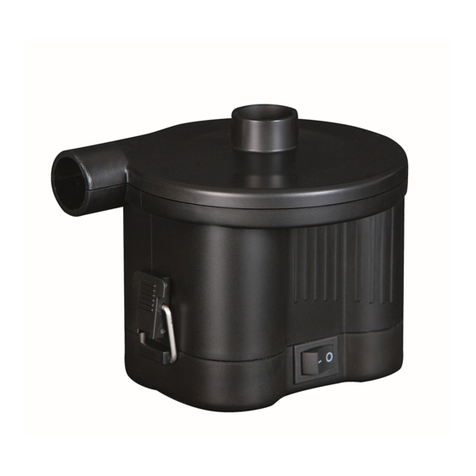
Bestway
Bestway 62038 operating instructions
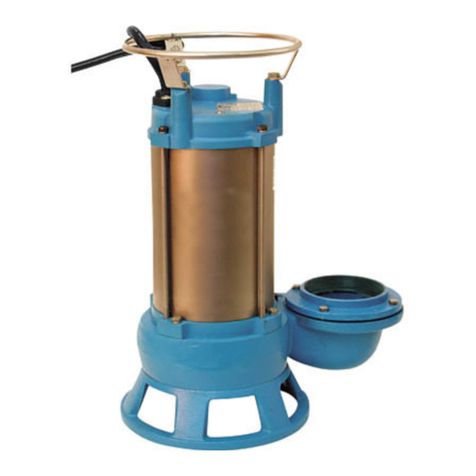
Gormann-Rupp Pumps
Gormann-Rupp Pumps SH2A3-E1 115/1 Specifications information and repair parts manual
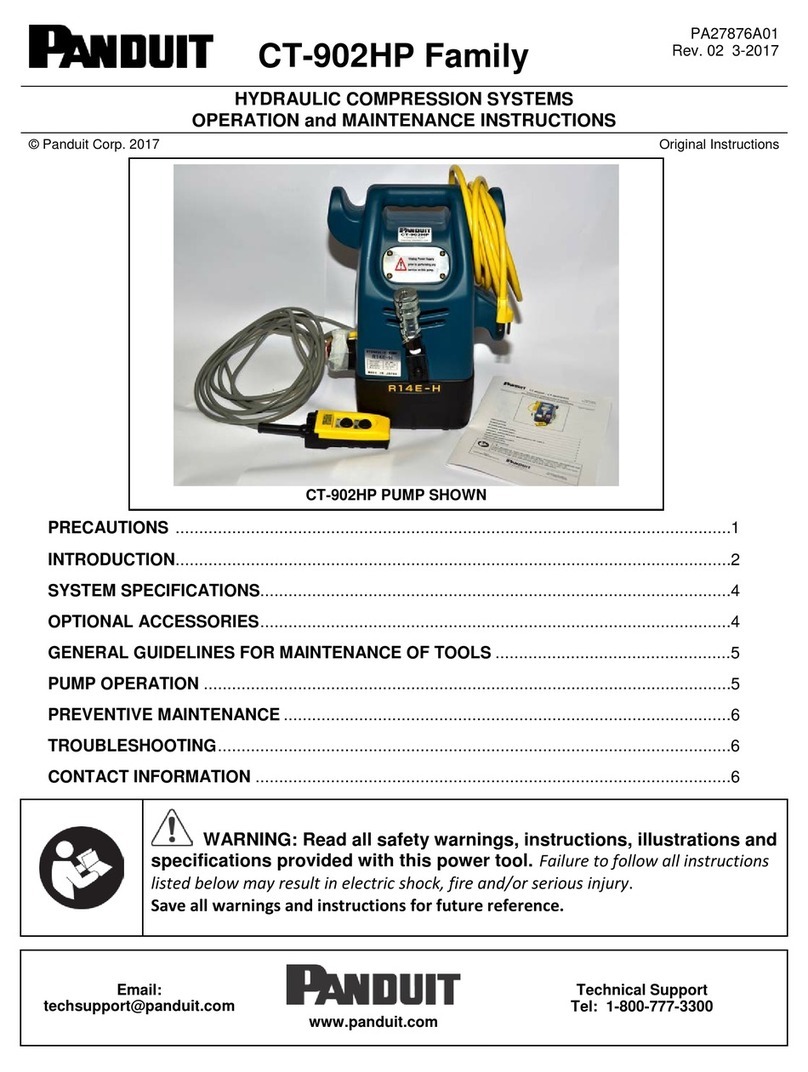
Panduit
Panduit CT-902HP Operation and maintenance
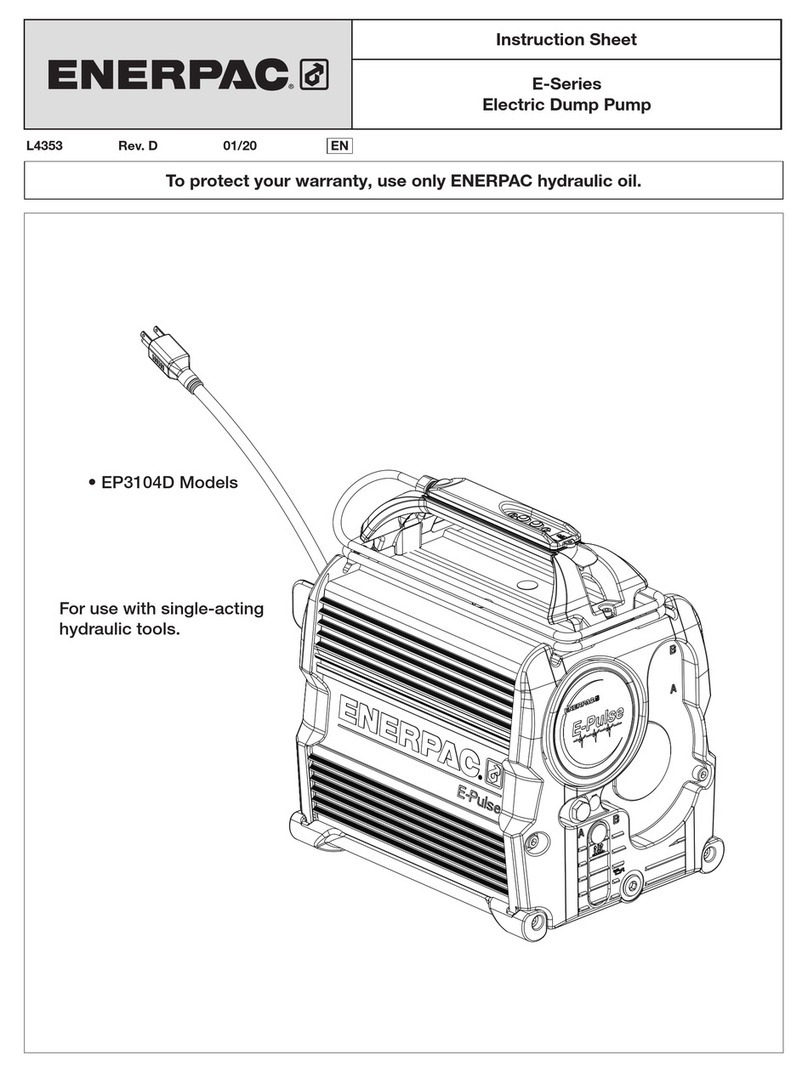
Enerpac
Enerpac EP3104D instruction sheet
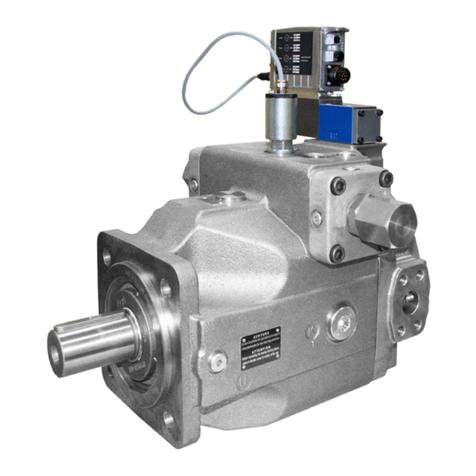
Bosch
Bosch REXROTH A4 Series instruction manual

Pfeiffer Vacuum
Pfeiffer Vacuum HIPACE 700 H operating instructions
